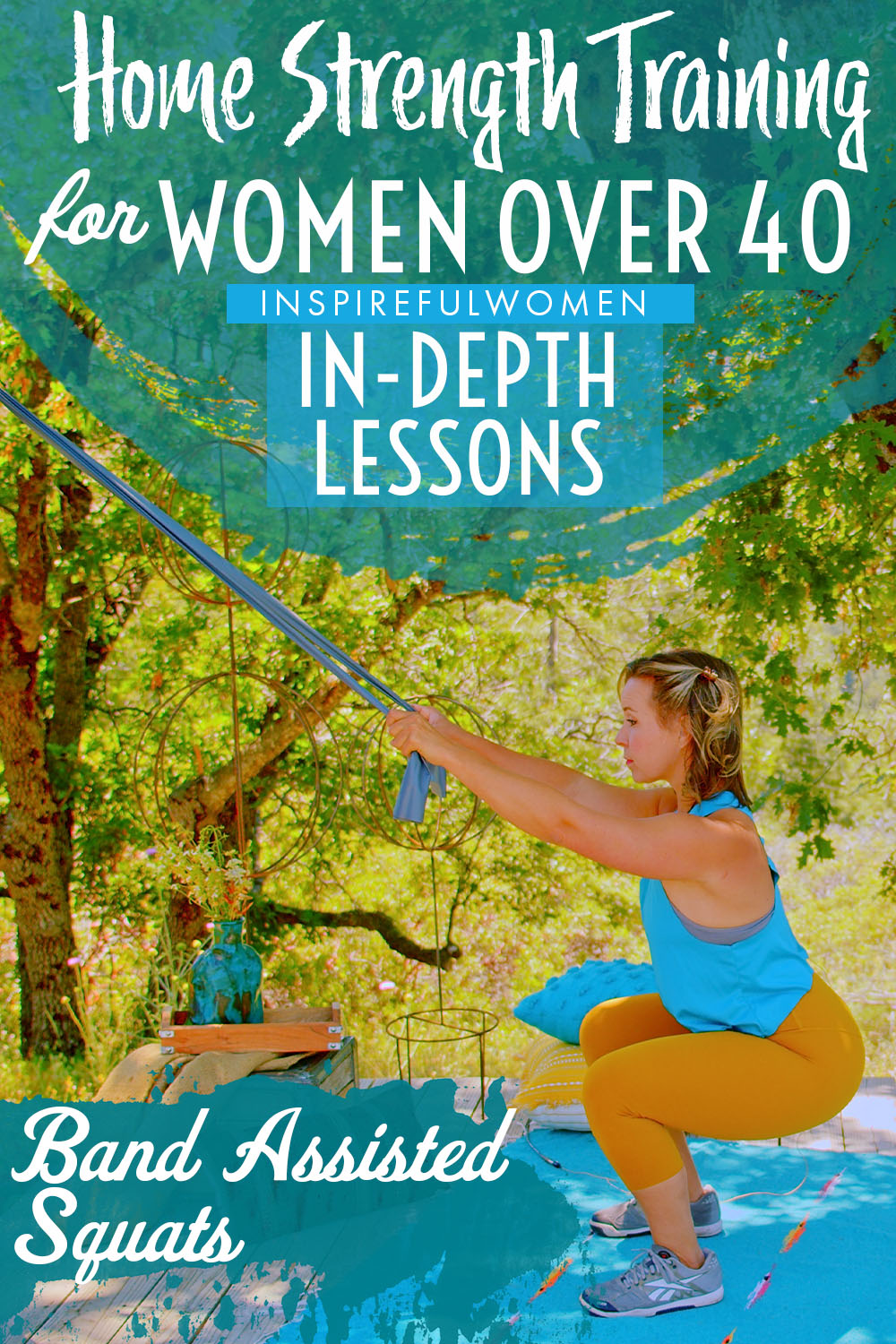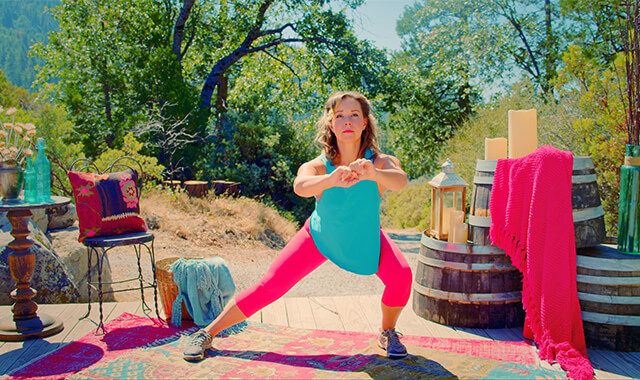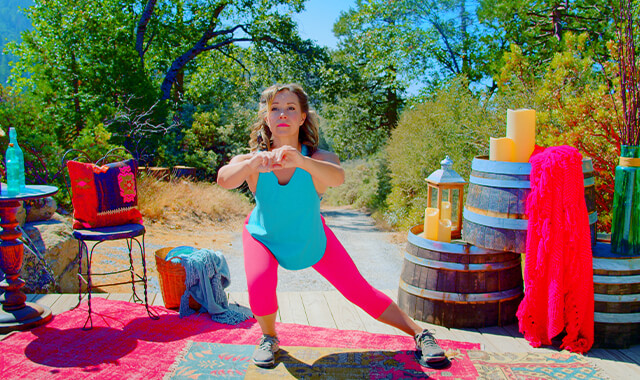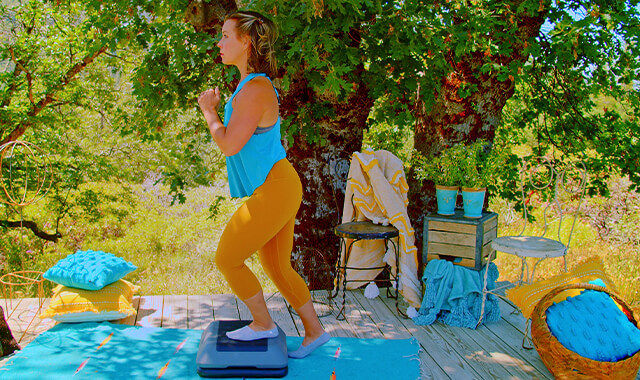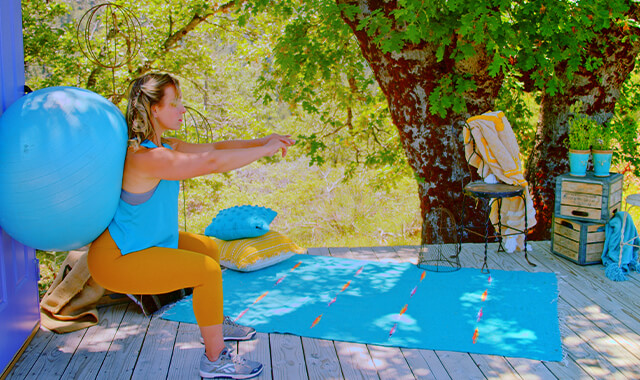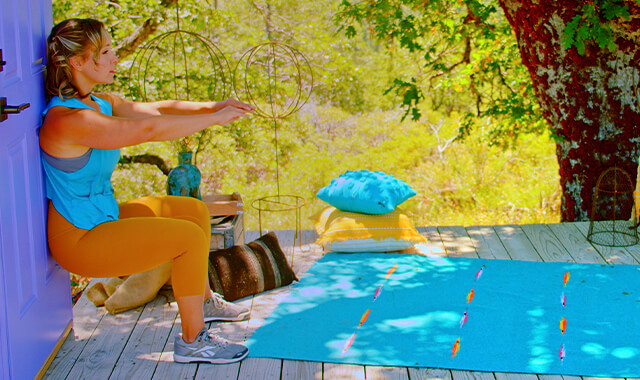Band Assisted Squat
How to Do the Band-Assisted Squat - Modified Squats for Bad Knee & Beginners | In-Depth Guide [VISUAL LEARNERS] Beginner
Proper Form & Common Mistakes | Home Resistance Training
WHAT DO YOU WANT TO SEE?
QUICK DEMO
QUICK DEMO
MUSCLES THIS WORKS
MUSCLES
MAIN MUSCLES WORKED IN the Band Assisted Squat
QUADRICEPS, GLUTEUS MAXIMUS
OTHER MUSCLES WORKED:
- Gastroc/Soleus
- Hamstrings
- Erector Spinae
STARTING POINTERS
Starting Pointers
WHAT WE'RE DOING TODAY
ALL WE'RE DOING:
While holding on to a band mounted above us, squat.
This modified squat is a bodyweight squat variation that's a great option for those with bad knees & beginners. Learning how to modify a squat to meet your body where it's at is an important way to get into this staple movement. The band assisted squat will keep your knees more over your ankles so that there is less pressure on the kneecap, and the band will also help you sink a bit lower while still keeping your torso fairly upright. Amazing that a simple resistance band can do all that! This is still a bodyweight lower body exercise you can do at home for your thigh muscles. Additionally, the assistance of the bands will accommodate weaker legs or core, pelvis or core instability.
In order to do a full squat with good form, you need to be able to hold the trunk upright, close to vertical, and keep the spine in neutral as you fold down at the hips, knees, and ankles. This requires quite a bit of core and leg strength. You need to be able to keep your weight back and torso upright without falling backward. Holding a strong resistance band that is anchored in front can prevent you from falling backward and provides some stability (the core muscles will be getting a little help). This makes it easier to complete the movement with the correct form as you strengthen the muscles. As you get better at the movement, progress to a lighter resistance band.
The band will resist the eccentric phase - when you lower down, the quadriceps and gluteus maximus will not have to work as hard eccentrically. The leg muscles will not have to work as hard to push back up to standing, the band will help to pull you back up.
Yes, try to have the same positioning that you would for a non-assisted squat. The main goal is to be able to go lower than you can without assistance - you should have the same form that you would have with a standard squat, but the band should allow you to go deeper while keeping your form. You are correct - do not lean back - keep your weight over midfoot.
HOW TO DO THE EXERCISE
LOOKS
HOW Band Assisted SquatS SHAPE OUR BODY
Firm and shapely thighs and buttocks.
PROPER FORM
PROPER FORM: Band Assisted Squats
EQUIPMENT, SETS & REPS
EQUIPMENT
Main set (3: Light/Med/Heavy)
X-Heavy Band (I recommend getting this too if you plan to use resistance bands frequently).
SUGGESTED STARTING WEIGHT FOR WOMEN:
Heavy resistance - Black or Gray
SETS & REPS:
2 sets of 8 reps - stop when you cannot maintain good form.
PACE:
Quick up and slower down.
BODY POSITION
BODY POSITION FOR THE Band-Assisted Squat
BAND: Anchor the band on the wall in front of you, above head level. Stand facing the band.
FEET: Hip width or slightly wider, parallel, toes pointed forward. *If you have to pinch in the front of your hip go ahead and point your toes out to a position where there is no pinching.
BODY STANCE: Neutral spine (includes neck) core muscles gently engaged. Sternum lifted and shoulder blades in and down your back.
ARMS: Hold one end of the band in each hand. Arms lifted up to the front, the band should have some tension on it.
HOW TO DO
HOW TO DO Band Assisted SquatS
CUE: Keep your sternum lifted - it can be easy to let the band pull your shoulders forward - keep them back.
Keep your spine neutral as you lower your body down. The band should be pulling you up and forward.
Activate your hip flexors by actively pulling your body down into the squat.
Bend at your hips, knees, and ankles to lower down.
Your shoulders will be about over your midfoot/ankle in the bottom position. Your knees inline with your toes.
Try to get your hips lower than your knees.
Return to standing: Push through the bottom of your feet to straighten your hips, knees, and ankles. The band will be helping pull you back up to standing.
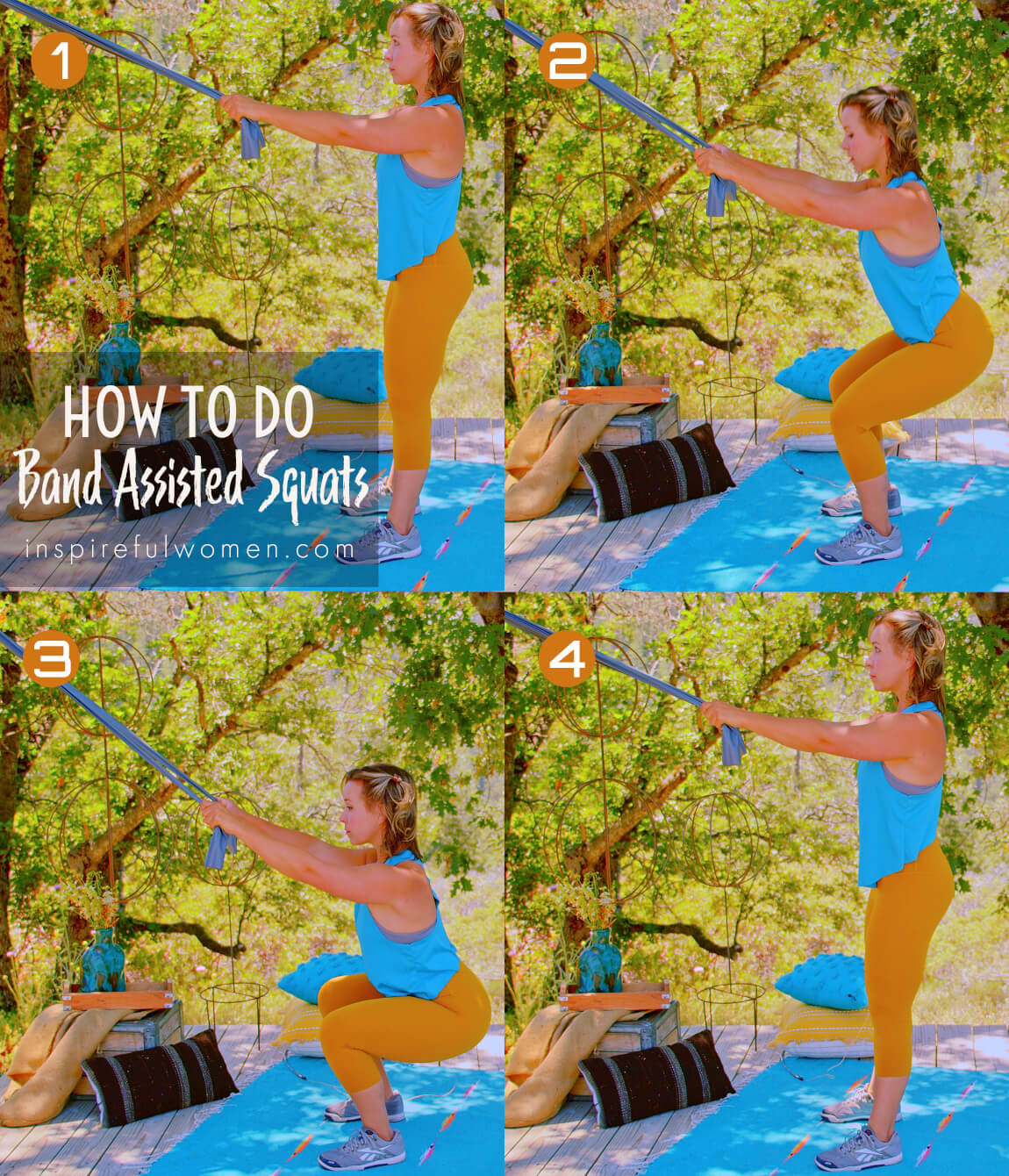
COMMON MISTAKES
COMMON MISTAKES
WHAT TO AVOID WITH THE Band Assisted Squat
KEY TIP:
Guess what? Good news! Many avoids are the same for most movements. Once you learn the basics, there's really only a few extra avoids for each individual movement.
1. Avoid Leaning Back
AVOID: Avoid leaning back.
WHAT TO DO:
- This is still a fairly upright position, with just a slight backward position in standing.

2. Avoid Bending/Arching/Rounding Spine
AVOID: Avoid rounding your back/”tucking your tail”
WHY NOT?
- This is the most common mistake made, in an attempt to go deeper into the squat, the tailbone is tucked under.
- This can lead to increased pressure on the spine, and lead to injury or damage over time.
- Tucking the tail, and rounding the low back defeats the purpose of going deeper into the squat.
WHAT TO DO:
- The goal for going deeper is to strengthen the core and increase the range of motion of the hips and ankles.
- Tucking the pelvis under does not increase the hip or ankle range of motion.
- Keep your spine from head to tailbone neutral throughout the movement.
- Keep your shoulders back and sternum lifted.
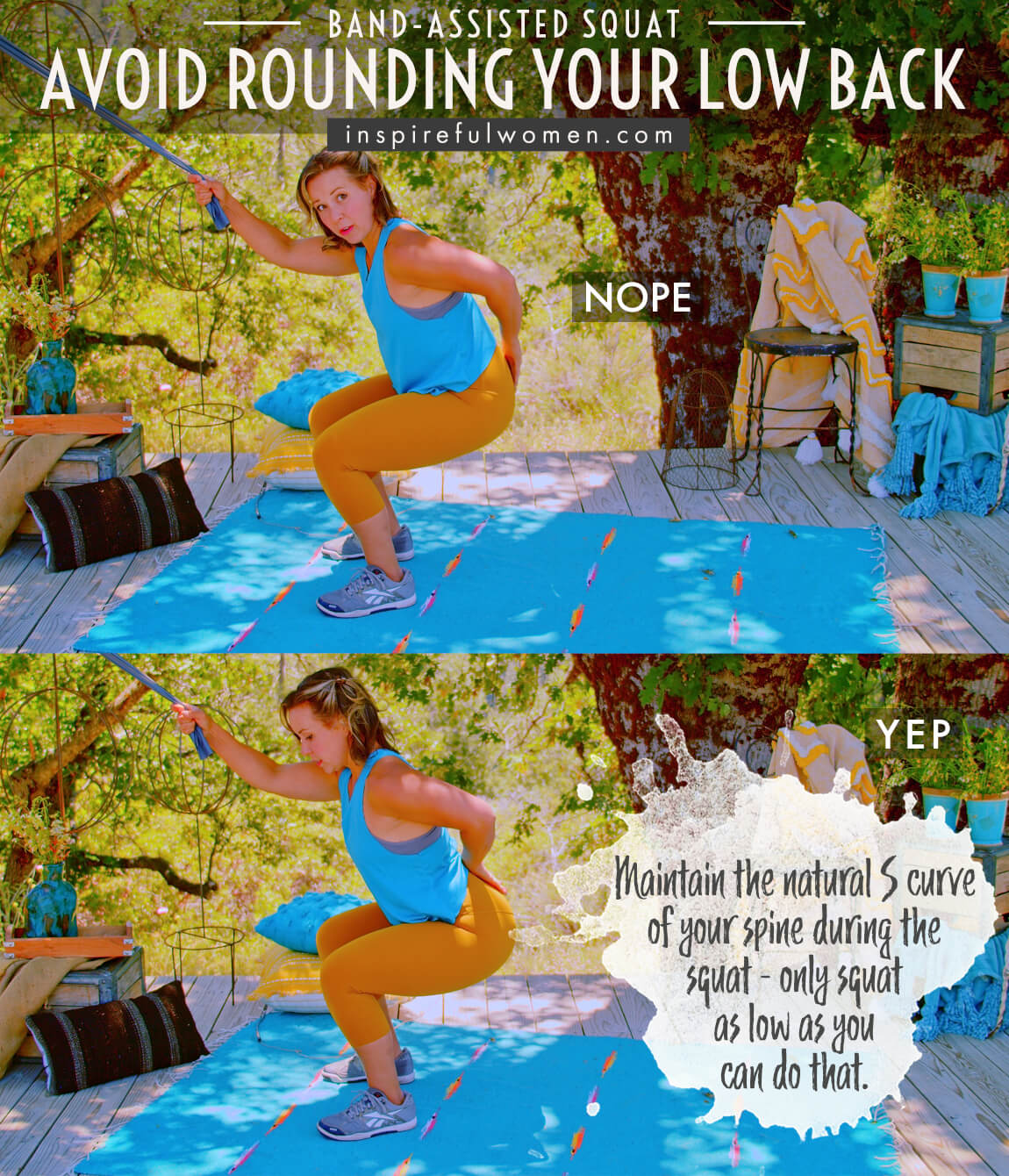
WHAT WE'RE DOING TODAY
WHAT & WHY
BENEFITS OF TRAINING THE Quadriceps
WHAT
This is a bodyweight isometric quadricep exercise. Squats can be modified to change the focus of the movement and can help us to improve in an area of our squat that we might be having trouble with.
The modifications all require the use of some sort of equipment, either a ball, wall, box (bench or chair), dumbbell, or band. Choosing which modified squats to do should be based on your ability and your goals. Squats can be slightly modified to accommodate personal limitations in core strength, hip, knee, ankle, or upper back stiffness or muscle tightness, and leg strength. The modifications do not necessarily make the exercise easier, just different. All of the modified versions of the squat focus on strengthening the quadriceps and gluteus maximus muscles, and involve movement at the ankle, knee, and hips.
- If you want to improve the muscular endurance and strength of the quadricep muscles:
- Try Wall Squats
- If you have difficulty:
- Keeping the heels on the floor during the basic squat
- Try: Wall Squat, Ball Squat, or Box Squat.
- Keeping the upper body upright (parallel with the shins/leaning the head and shoulders too far forward)
- Try: Wall Squat, Ball Squat, or Banded squat.
- Keeping your spine in neutral or back pain by squatting
- Try: Ball Squat
- Keeping the heels on the floor during the basic squat
- If you want to work on getting the thighs past parallel to the floor
- Try: Ball Squat or Banded Squat
Keeping the small curve in the low back as you squat down can be hard for a lot of people. It may be helpful to actively pull yourself down at the beginning of the squat. One of the hip flexors (iliopsoas) is attached to the low back (the lumbar part of the spine). Activating these muscles can make it easier to hold the low back in a neutral position.
WHY BOTHER DOING IT?
WHY
WHY DO WE EVEN CARE?
Squats are very functional and fairly simple to do. Our bodies were designed to squat - our ancestors squatted for many of their daily activities - like eating, washing clothes, going to the bathroom, and even talking. If you have the opportunity to watch children play, it is amazing to move in and out of a perfect squat position without effort, and hold the position while they play. However, if you’ve seen this, you’ve also properly thought, “wow I could never get into the position that kids hang out in.” Or we might be thinking just how much discomfort we’d be in if we tried to do that.
ACQUIRE/IMPROVE GOOD FORM WITH MODIFIED SQUATS
If you are not in the habit of squatting it can be challenging to do a squat. Personal limitations can interfere with your ability to squat in the correct form. It may be very useful to start with a modified version to build up the strength and joint mobility to be able to squat.
All of the modified squats do a great job of strengthening the leg muscles. In fact, the wall sit is the best squat to use to recruit more motor units - in other words - to activate the individual muscle fibers - get more muscles involved in the exercise. When you hold your body weight in the wall sit position the muscle fibers fatigue. In order to stay in the position, more fibers are recruited to help out. This is a nice way to improve your mind-body connection and the ability to activate more of the muscle. The wall sit works really well for this because you are holding the position where the muscle is being challenged the most (thighs parallel to the floor).
PUT MOVEMENT BACK WHERE IT BELONGS, AND GET RID OF MOVEMENT WHERE IT DOESN’T BELONG.
With age we tend to lose mobility in the ankles and hips - they get stiffer. When those joints get stiffer, it changes the way that we move. We begin to use our low backs more and our legs less. Over time this leads to backs that move too much and weaker legs. Slowly there can be a trend towards taking smaller steps when walking, not wanting to get down on the floor, using the hands to get up from the floor, and using gravity and the arms to help get out of chairs and upstairs. Adding squats to your workout can help prevent this from happening.
EVERYDAY LIFE
EVERYDAY LIFE &
MUSCLE FUNCTION
HOW WE USE OUR quadriceps & gluteus maximus IN EVERYDAY LIFE
The quadriceps and gluteus maximus muscles work together in activities that involve straightening the knee and the hip at the same time.
1. JUMPING
2. CLIMBING
3. GOING UP AND DOWN STAIRS
4. TRANSITIONING SIT TO STANDING TO SIT
- Sitting in chairs
- In and out of cars
- On and off of the toilet
5. SQUATTING DOWN/GETTING UP
- Getting things out of the bottom shelf
- Getting up and down from the floor
- Gardening
- Picking items or kids up
6. SHOCK ABSORBERS TO PROTECT THE ANKLE, KNEE, AND HIP JOINTS DURING:
- Walking
- Running
- Jumping
7. STABILIZES THE KNEE JOINT DURING ALL ACTIVITY THAT INVOLVES BENDING AND STRAIGHTENING THE KNEE.
- Positions the kneecap in the groove of the femur during knee movement
HOW TO FEEL WHAT MUSCLE IS WORKING
How to Feel What Muscle is Working
Quadriceps: Sitting upright, place your hand on the front of your thigh (of the test leg). Hook the ankle of the other leg to hold the test leg (the leg that your hand is resting on) in place. Try to straighten the test leg by lifting the foot. You will feel your quadriceps contract.
Gluteus Maximus: Place your hands on your bottom - about where they would be if you put your hands in your back pockets - with the palms on your buttocks. Push down into both feet as if you were pressing yourself up to standing. Try to keep the front of your thighs relaxed so that the muscles under your hands contract. Try activating only one side at a time.
SCIENCY STUFF
ALLLL MUSCLES & WHEN
ALL MUSCLES WORKING & WHEN DURING THE Band Assisted Squat
In the starting position, the muscles of the core (transverse abdominis, obliques, erector spinae, multifidi, rectus abdominis) work to hold the spine in neutral. The scapular muscles are working isometrically to hold the shoulder blades together and down the back.
The iliopsoas and rectus femoris (hip flexors) act concentrically to flex the hip to pull your body down. Activating the iliopsoas to pull your body down increases the stability of the core (it originates on the lumbar spine). The muscles will be working against the pull of the band. The quadriceps and gluteus maximus contract eccentrically to help control the movement.
In the full squat position the gluteus maximus (hip extension) and quadriceps femoris (knee extension), gastrocnemius, and soleus (plantar flexion - pulls the tibia back) contract concentrically to push the body back up to the starting position. The thigh adductors work to pull the thighs together, the adductor magnus also helps with hip extension. The soleus and gastroc contract concentrically to pull the tibia (shin bone) back to vertical.
PIN IT FOR LATER!

